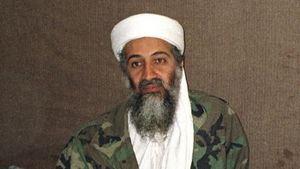JAKARTA - War can lead to catastrophic hunger is not just an empty message. Vietnam has felt it. This condition took place when the end of the Vietnam War in 1975. The issue of hunger appears everywhere.
The Vietnamese Communist government took a stand. Economic reform was rolled out in the 1986 era. Doi Moi's policy, his name. Food shortage was answered by a real action. Rice planting was carried out in a large way. As a result, Vietnam succeeded in realizing rice self-sufficiency.
The title of the United States (US) as a country that often interferes with the politics of other countries is undeniable. This condition was present in the Vietnam War which began in the 1950s. The US provided military and economic assistance to South Vietnam to destroy the Communist-blading North Vietnam.
In fact, this condition must be paid dearly when the war is over. Vietnam then felt the impact of the war that brought nestapa. Instead of being able to live in peace immediately, the whole of Vietnam was immediately hit by painful facts.
Economic conditions fell at their lowest level. Conditions are getting worse with the hunger disaster starting to hit all over Vietnam. The ruling Communist government of Vietnam was hit by confusion. They began formulating strategic steps to rebuild Vietnam. However, building matters after war are not easy.
The absence of funds is a cause. The owner of power also relies on assistance from various nations to be able to rebuild Vietnam. A series of aids were used to first patch people's food needs.
This condition makes Vietnam's economic development period like a road. Everything is because there are no many experts. A condition that makes Vietnam predicted not to make many breakthroughs.
In fact, the prediction was not entirely correct. Assistance, especially from the Soviet Union, allowed Vietnam to build many things. The communist government moved quickly. They tried to summarize the economic reform plan.
With great enthusiasm they talk about the people's victory over imperialism and future images that will be more victorious. Experienced politicians are busy drafting a tenuous communist government, which they think could naturally create a big country with giant factories. Both Western democracies and communist regimes, all are willing to lend their hands to provide their help.
In just two months after Vietnam said what it needed, port cities were packed with aid items. But there is disagreement in the aid, precisely in the most important case. Vietnamese people believe that they will be able to work on and carry out the aid project well on their own. While people know that this is not possible, "is written in a tempo magazine report entitled Assistance to Hanoi: Disappointed Nada (1976).
The Vietnam war that left the people starving and isolated was the reason for the communist government to make a breakthrough. The economic reform program known to be ambitious, Doi Moi was rolled out in 1986. Doi Moi, which means renewal was rolled out so that Vietnam would get out of hunger and the economic crisis.
Doi Moi's policy of becoming a Vietnamese weapon rose in adversity. Moreover, in the agricultural sector. This policy made the Vietnamese government focus on eliminating the problem of hunger from Vietnam.
The communist government has ambitions to no longer rely on imports of rice from other countries. They want to eat with their own businesses. Large-scale rice planting is echoed. The power of attorney also formed a cooperative to support and advance farmers.
The support was given optimally. The communist government tries to raise the lives of the farmers. The government has started to provide training, land, cheap fertilizer, and equipment.
The government has also started to invest heavily in building infrastructure that supports the smooth production of rice. Everything aims to increase the production of farmers and distribution of rice into efficiently.
The results are brilliant. Vietnam managed to obtain rice self-sufficiency. A phase for Vietnam, which is starting to be able to provide its own food needs for its people. Vietnam, which was originally a country that often imports rice, has actually transformed into an exporting country.
The benefits of Doi Moi's policy in the agricultural sector have been felt by the whole of Vietnam until now. The country has become one of the big exporters of world rice. In fact, now Vietnam is able to beat Thailand to become the number one rice exporter in the Southeast Asia region.
SEE ALSO:
After the reform, rice yields increased 3.23 percent every year in the period 1981-1987 and 2.80 percent every year in the period 1988-1995. Total rice production increased 3.14 percent every year in the period 1981-1987 and 5.19 percent every year in the period 1988-1995. The annual rice yield per capita (rough) was also stable in the period 1976-1981, which was around 217 kilograms (kg).
For the next twenty years, output per capita has almost doubled. Until 1989 Vietnam was able to self-sufficiency in rice, and changed from a rice importing country to a rice exporting country in the 1990s and even the second largest in the world after Thailand," explained Dina Srirahayu in his writing in the Regional Study Journal entitled Efforts to Strengthen Vietnam's Rice Position in the Global Market Through Branding (2020).
The English, Chinese, Japanese, Arabic, and French versions are automatically generated by the AI. So there may still be inaccuracies in translating, please always see Indonesian as our main language. (system supported by DigitalSiber.id)














